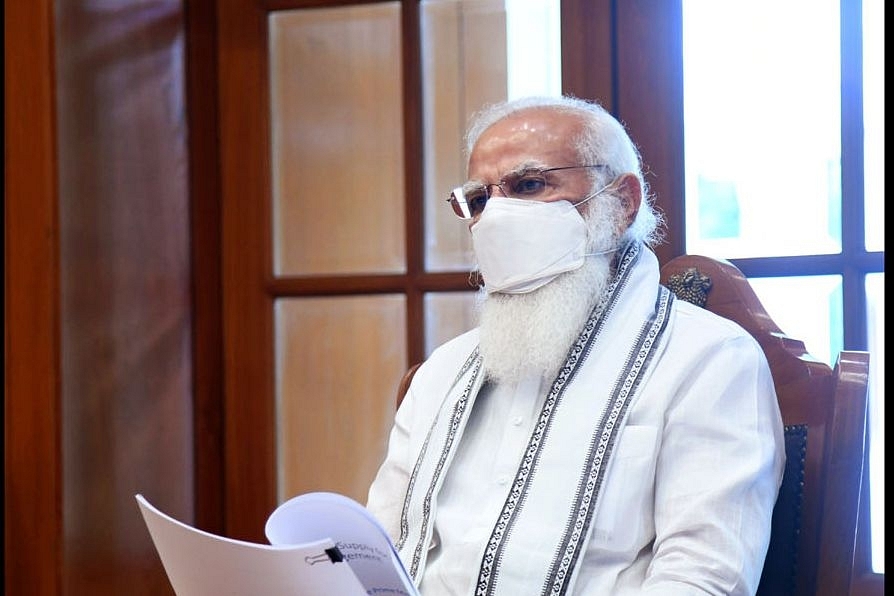Ideas
13 Reasons Why India Finds Itself Battling A Second Wave
- Most of the reasons are the results of governments and people letting their guard down.
- No one reason can be blamed entirely for India's current misery, but added together, they made for something more terrible than just their sum.

Prime Minister Narendra Modi (PMO)
What went wrong?
As India finds itself battling a second wave of Covid-19, that is one of the natural questions to spring to everyone's mind.
In February, almost the whole of India thought that the country had seen the back of the coronavirus for good.
By the middle of March, hotspots had begun to re-emerge, and by April, India was in the middle of its biggest health crisis yet.
Between trauma and stress, Indians asked themselves, each other, and their governments the same question: what went wrong?
Here, I propose 13 reasons as an answer to that query.
1. Business as usual with economy opening out: Every one thought that with the first wave done, Covid-19 itself was gone. Everyone, government, business, society, let their guard down.
Additionally, given that there was pressure and need for economic recovery, there was no appetite for tolerating even small containment zones.
At the same time, Maharashtra and Kerala kept simmering but below the radar.
2. Scientific opinions spread the notion of some level of herd immunity being achieved, based on sero surveys done in dense urban areas. This too helped in loosening restrictions.
3. Slow pace of vaccination: There was a degree of hesitancy among people themselves, with many even questioning the need for vaccination in the face of declining daily case load in January-February. Add to this, anxiety about vaccines themselves.
And add to that, the failure to augment supply lines of vaccine to ensure steady expansion of the programme.
4. Deceitful mutation ducking RT-PCR tests: High number of asymptomatic and mildly symptomatic cases caused casual spread in the second wave because the RT-PCR tests came negative and hence they did not care to self-isolate.
5. Shorter incubation period, younger people also hit: In the second wave, this virus often directly hit the lower respiratory region.
That is why, we have seen far more emergencies than in wave one, and more tragically many among younger populations also.
The insistence on a Covid positive report for admission to hospitals has been harsh on all false negative cases, leading to many avoidable tragedies.
6. The built out super capacity of Covid hospitals (railway coaches too) went slack when wave one died down.
7. Covid fatigue and triumphalism led to social engagements as BC (before covid). There were functions, events, parties, milestone celebrations. Everyone let their hair down along with their guards.
8. Summertime jump in air-conditioning. The winter heating effect of the West became our summer effect.
9. People travelled across the length and breadth of the country. For any and all reasons.
10. Protest rallies, religious events and elections organised at scale. Out of this, only the Kumbh mela insisted on RT-PCR negative tests, though we are not sure how well this worked over the weeks.
11. States vs Centre battles on vaccine, especially the tension between some states governed by a non-BJP party and the Centre.
This aggravated the already poor communication around vaccines at the local level. Meanwhile, we had missed an early buildup of the supply pipeline.
12. Vaccine maitri (with pomp) made India look good when the West was on its knees. There were 70,000 fatalities in the UK alone between January and March 2021. It was here however, where the seeds for schadenfreude were sown.
13. Overall, the centre chose a decentralised approach after the first wave. This single act may have contributed to a lot of negative perception of the Government of India sleeping at the wheel, given States' performance.
Introducing ElectionsHQ + 50 Ground Reports Project
The 2024 elections might seem easy to guess, but there are some important questions that shouldn't be missed.
Do freebies still sway voters? Do people prioritise infrastructure when voting? How will Punjab vote?
The answers to these questions provide great insights into where we, as a country, are headed in the years to come.
Swarajya is starting a project with an aim to do 50 solid ground stories and a smart commentary service on WhatsApp, a one-of-a-kind. We'd love your support during this election season.
Click below to contribute.
Latest